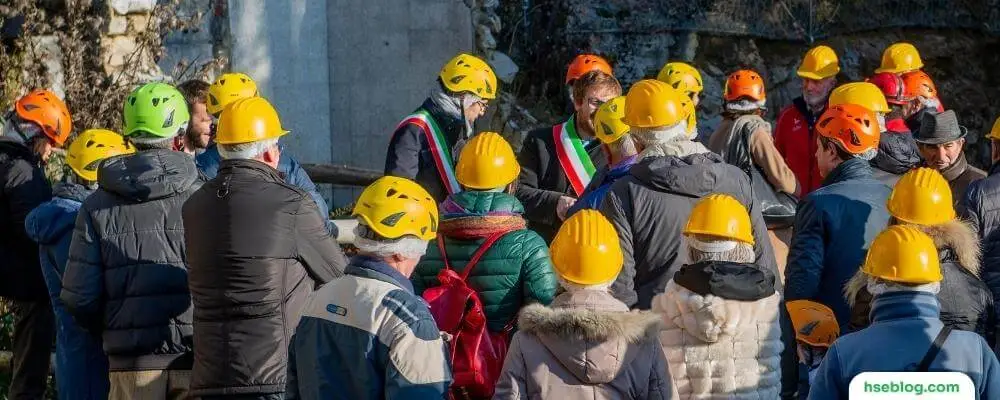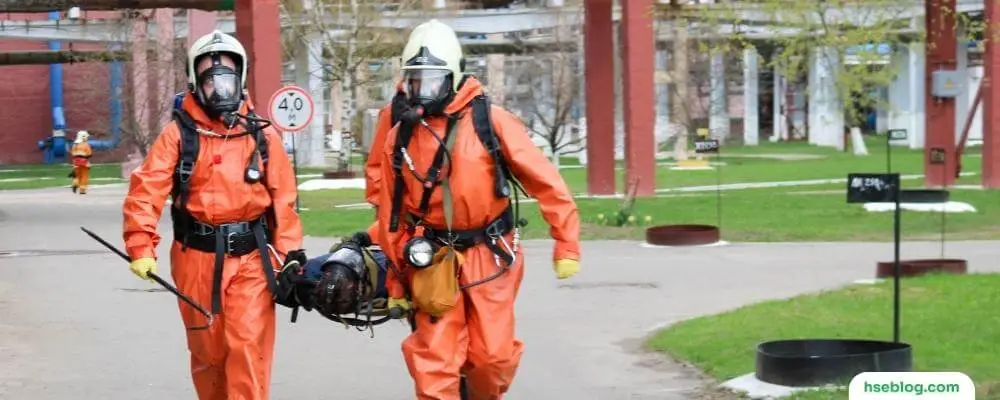Preparing for an emergency situation might not be the most exciting aspect of your workday, but it’s undoubtedly one of the most crucial. Emergency drills are a vital part of ensuring safety at the workplace. From fires and floods to earthquakes and tornadoes, unexpected crises can occur anytime, and the best defense is a well-prepared team.
In this blog post, we’ll delve into the different types of drills you may need to conduct at your workplace and provide practical tips to execute these drills effectively. We aim to help you create a safer, more prepared working environment.
What Is An Emergency Drill?
An emergency drill is a practice method to prepare individuals for a potential emergency. It is a procedure that involves the simulation of emergency circumstances, such as fire, earthquake, lockdowns, or active shooter incidents, to train individuals to respond in a real-life scenario.
The purpose of emergency drills is to ensure that everyone knows what to do if an emergency occurs. By rehearsing the actions to take, people can respond more quickly and efficiently when faced with an actual crisis, potentially saving lives and minimizing damage.
Why Are These Drills Important?
Here are some reasons why emergency drills are important:
- Preparedness: Emergency drills prepare individuals to respond quickly to emergencies by teaching them what actions to take. This can be particularly important in high-stakes situations where a delayed response time could result in serious harm or even loss of life.
- Familiarity with Emergency Procedures: Drills help individuals familiarize themselves with emergency procedures and routes. This is especially crucial in large buildings where evacuation routes can be complex.
- Reducing Panic: In the face of an emergency, it’s common for people to panic, leading to confusion and mistakes. Regular drills can help reduce this panic by giving individuals a clear set of steps.
- Testing Procedures and Equipment: Emergency drills offer a chance to test emergency procedures to ensure they are effective. They also allow testing of emergency equipment, such as fire extinguishers or alarm systems, to ensure they work properly.
- Identifying Areas for Improvement: After a drill, participants and organizers can review the drill’s effectiveness, identify areas where performance could be improved, and make necessary adjustments to the emergency plan.
- Compliance with Laws and Regulations: In many places, conducting regular emergency drills is not just a good idea. It’s also a legal requirement. Businesses, schools, and other organizations are often required by law to conduct regular drills.
Organizations can create a safer environment for everyone by conducting regular emergency drills.

Tips For Conducting A Successful Emergency Drill
Conducting an effective emergency drill involves more than just sounding an alarm and directing employees to exit the building. Here are several tips to ensure your emergency drills are successful and beneficial:
By following these tips, you can ensure that your emergency drills are as effective as possible, better preparing your employees for emergencies.
Types Of Emergency Drills In The Workplace
Several types of emergency drills can be conducted in the workplace, depending on the nature of the work, location, and the potential hazards present. Here are some of the most common types:
Remember, the best type of drill depends on your workplace’s specific needs and circumstances. It’s also essential to regularly review and update your emergency procedures to account for changes in staff, building layout, or local risks.

Factors to Consider in Workplace Emergency Drills
An effective workplace emergency drill should be based on a well-developed plan considering your workplace’s needs. It should be designed to test your emergency procedures’ effectiveness and allow employees to practice their roles in an emergency situation.
When developing your workplace emergency drill plan, there are several factors that you need to consider:
- The type of emergencies that could occur in your workplace
- The location of your workplace
- The number of employees in your workplace
- The ability of your employees to evacuate the premises safely
- The availability of emergency services
Once you have considered these factors, you can start developing your workplace emergency drill plan. If you are unsure of how to do this, there are several resources available that can help you.
When developing your workplace emergency drill plan, it is important to keep the following points in mind:
- All employees should clearly state and understand the purpose of the drill.
- The drill should be conducted at a time when employees are not expecting it.
- Employees should be given enough time to evacuate the premises safely.
- The drill should be conducted in a realistic manner and as close to a real emergency situation as possible.
By following these tips, you can ensure that your workplace emergency drill is effective and that your employees are prepared in the event of an actual emergency.
When conducting a workplace emergency drill, it is important to debrief your employees afterward. This will allow you to identify any areas where improvements can be made. It will also provide employees with the opportunity to raise any concerns they may have about the drill or the emergency procedures.
By following these tips, you can ensure that your workplace emergency drill is effective and that your employees are prepared in the event of an actual emergency. If you have questions about conducting a workplace emergency drill, please contact your local fire department or emergency management office.
Simulating a real event is necessary to polish your disaster plans. “If an organization fails to plan, then it is planning to fail,” says Sean Ahrens, project manager security for Aon Risk Solutions. Use tabletop exercises to evaluate your evacuation procedures with your emergency team. You can test for potential glitches and find unaddressed complications by running hypothetical scenarios.
“You need to work through the process of what an event will entail and what resources you need to bring to bear,” says Ahrens. “Then you anticipate how people are going to go evacuate, where they should go, and how you’re going to communicate this to them.”

Emergency Drill Checklist
You should also introduce wildcard situations during these theoretical drills. What happens if construction blocks an exit, a floor monitor is out sick, or someone is on crutches? Test the limits of your plans to ensure they can accommodate multiple variables.
Conclusion
In conclusion, emergency drills are an indispensable part of workplace safety protocols. They equip employees with the knowledge and skills to respond effectively during a crisis, helping mitigate risk, reduce panic, and save lives.
Whether it’s a fire drill, earthquake drill, tornado drill, or any other type of emergency drill relevant to your workplace, each serves a critical role in preparing your team for unpredictable situations. Regular and varied drills, combined with post-drill analysis and feedback, can significantly enhance your organization’s emergency preparedness.
Remember, the objective is to tick a compliance box and genuinely make your workplace safer. We hope this guide on “Emergency Drill: Types & Tips For Effective Emergency Drills” has provided you with valuable insights to design, execute, and evaluate your emergency drills more effectively. Stay proactive, stay prepared, and ensure safety for all in your organization.

